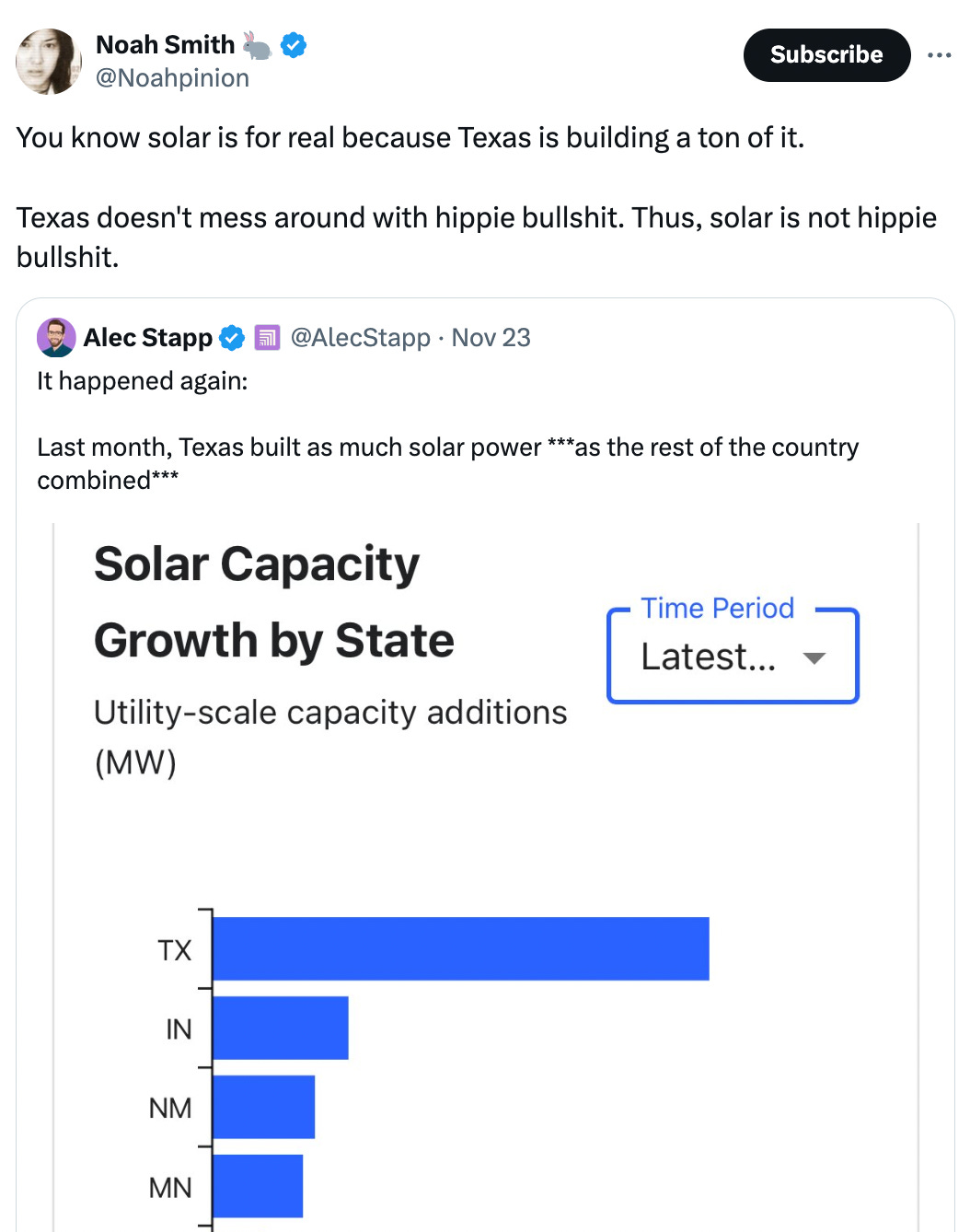Be Careful of the Lessons You Learn In Texas
Texas is building more solar than any state. It also has the state's dirtiest electric grid.
If you’ve spent any time online in the last few years, you’ve no doubt seen what I’ve come to think of as “the Texas clean energy story.”
You might have seen it in social media posts like these:
Or you might have seen it in a mainstream news article with headlines like these:
Can Blue States Build? Texas is a national leader in clean-energy generation. Democrats should take note. (The Atlantic)
How red Texas became a model for green energy. The state’s solar surge proves that the energy transition defies politics. (Financial Times)
Solar is bigger in Texas (Axios)
Or maybe you read it in my newsletter or one of my own social media posts earlier this year.
It’s been hard to miss the the story of Texas as the clean energy and climate hero. In the last few years, it’s been shared in viral social media posts, cable news segments, podcasts, and print media.
But there’s another side of this story that is often left out of these articles, including in the one that I wrote: While Texas leads the country in building clean energy, it also leads in electricity emissions and pollution. No other state’s electric grid puts as much carbon into the atmosphere each year.
Plenty of states have dirty grids, of course. Wyoming, West Virginia, and Alabama all run primarily on coal. But none of these states are put forward as a hero and model in the way that Texas has been in the last two years. The subtext of most stories about Texas’ clean energy success is that America and other states should rewrite their energy policies and regulations to look more like those in the Lone Star state.
But before doing that, we’d all be wise to look at the entire energy picture in Texas.
Texas really is building a lot of solar
There’s no doubt that Texas leads the country in new solar deployment. Over the last 12 months, the state has built more than 7 gigawatts of new capacity—more than any other state by far, as you can see in the Cleanview chart below.
Texas’ recent solar boom has helped the state surpass California in having the most installed utility-scale solar. California still leads the country in total solar electricity production thanks to its millions of rooftop solar systems. But at the rate Texas is building new solar, it’s unlikely to keep that lead for long.
The growth of solar has helped Texas cut emissions from its grid by 7% over the last five years—a period that saw total electricity consumption rise by 20%.
There are no signs that this growth will slow down in the coming years either. Using data from Cleanview—the tool I built to track clean energy trends and projects—I looked at how much clean energy is expected to come online in the next 18 months. Texas has more planned capacity than the next 9 states combined.
Keep reading with a 7-day free trial
Subscribe to Distilled to keep reading this post and get 7 days of free access to the full post archives.






